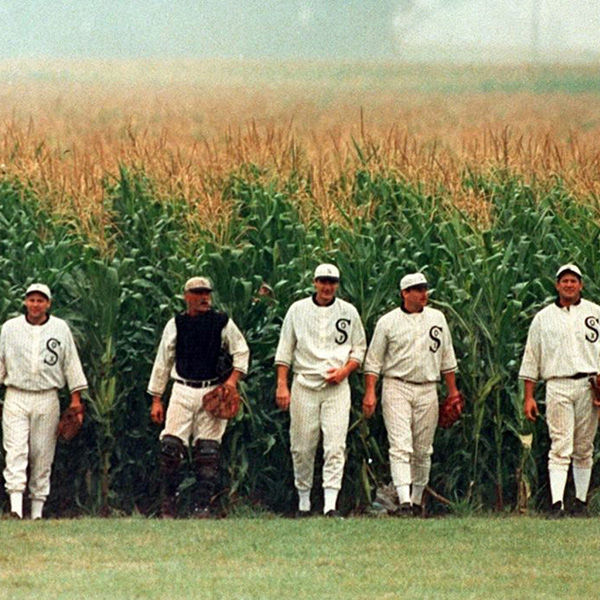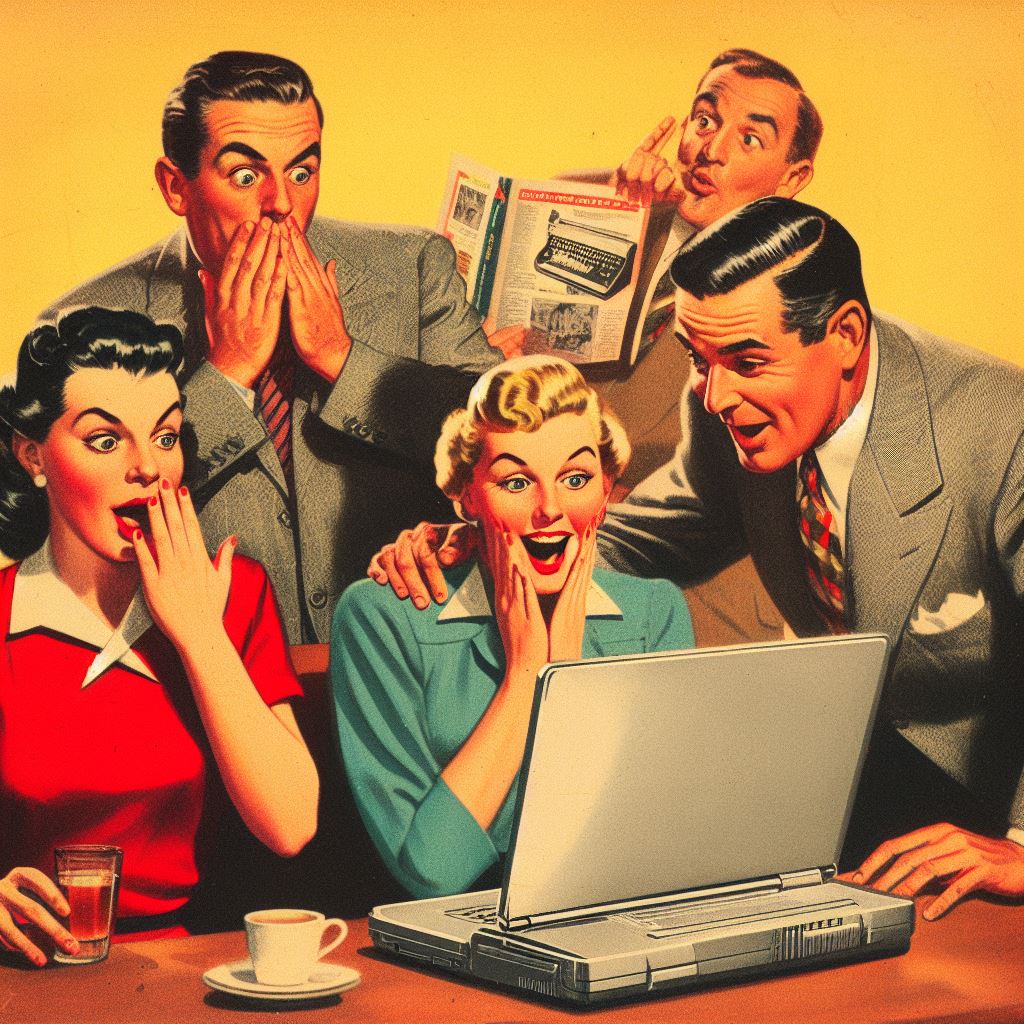A friendly ghost in a cornfield once uttered the phrase “if you build it, they will come.” And for a time, they weren’t wrong. This was, however, a circa 1989 ghost with absolutely no knowledge of SEO (search engine optimization), PPC (pay-per-click advertising), CPM (cost per thousand impressions), and all the other modern-day TLAs (three-letter acronyms) that we must now use to (borrowing from yet another adage) lead the horse to water… much less metaphorically making them drink. This is all to say: even if you build it, they won’t necessarily come.
However, if you can make the horse laugh, you’ll be making great strides in getting them properly hydrated.
So, how do you make the horse laugh? One effective strategy is to use humor in your advertising. A MarketingCharts.com study in March of 2022 showed that 37% of television ads incorporate some form of humor, with YouTube ads at 30%, and the overall percentage across all mediums being 33%. Consumers find humorous ads to be both “enjoyable and memorable.”
For example, in 2012, Dollar Shave Club uploaded a 90-second video of its founder deadpanning through increasingly bizarre scenarios while extolling the benefits and virtues of the brand. This video would eventually get 27 million views and lead to Dollar Shave Club being acquired by Unilever for one billion dollars in 2016. Dr. Squatch, a soap startup, uploaded its own funny video in 2018, quadrupling Dollar Shave Club’s campaign with nearly 120 million views; the company is now valued at $4.3 million with over $100 million in sales.
But what really sets these campaigns apart is their virality. In order to overwhelmingly succeed in today’s market, an ad campaign needs to go viral. A recent example was IHOP jokingly rebranding itself as IHOb, International House Of Burgers. This 7-day campaign not only trended on Twitter but also resulted in other brands, from Chiquita Bananas to White Castle and Burger King, all weighing in on the conversation.
People love to share the things that make them laugh. The returns on viral marketing campaigns not only compound exponentially but essentially also become free advertising.
But humor doesn’t just benefit your marketing ROI. It can also humanize your brand and build consumer trust. Wendy’s, for example, delighted and entertained the internet in 2017 by using its Twitter account to famously (and hilariously) respond not only to regular Twitter users but also to fire shots at their direct competitors, including McDonald’s and Subway. This effort undoubtedly exposed the brand to a new audience while also reinvigorating the restaurant in the eyes of its existing audience.
A 2018 Clutch Advertising Survey showed that 53% of consumers like advertisements “if they’re humorous.” In the same way that someone telling a joke can warm the entire room up to them, a funny commercial, or even just a slogan, endears a brand to an audience much quicker than virtually any other strategy. For comparison, the same study showed that only 44% of consumers liked “informative” or “relatable” advertisements.
But why does humor matter? Of course, people love to laugh. And numerous studies have shown that laughter plays a key role in building consumer trust. But ever since the days of Aristotle, who famously discussed the effects of laughter as early as 350 BC, we’ve been unable to definitively state exactly why the things that are funny… are funny. And honestly, that fact in and of itself is funny.
Though we may be unable to explain why things are funny, humor can still be leveraged to benefit your business.
So how can you effectively use humor in your advertising? Jokes are often created by beginning at the end, then working backward from the punchline in order to craft the perfect setup. Humorous ad campaigns can work exactly the same way, by beginning at the end.
However, it’s important to keep in mind that effective humor in advertising requires careful alignment with the desired CTA (call to action). The punchline or callback in a humorous ad should inherently contain some type of CTA. What do you want the audience to do? Do you want them to click here and learn more, or do you want them to share the content, or do you want them to buy now? This all depends on your specific goals, but it’s never a good idea to sacrifice the CTA in favor of the joke; craft the joke to work with (and for) the CTA. This is still business, after all.
To maximize the impact of humor in your advertising, it can also be helpful to think about the three basic elements of a joke: the set-up, the punchline, and the callback. The set-up provides the overall scene, settings, or details necessary to work towards the punchline, which is the payoff of the joke and can often lead to the callback, which can elicit additional laughs by referencing some scenario from earlier in the joke again, or otherwise close a loop or give the illusion of including the audience in on an inside joke of sorts. When the above three factors are executed with the correct timing, the result is going to be laughter. Often the key to a successful joke is also simply delivering the punchline in an unexpected way. It’s really the unexpectedness that results in the humor. Like Wendy’s attacking McDonald’s via Twitter, literally, no one expected that.
In conclusion, when utilized intelligently and strategically, humor can be one of the absolute best tools any marketer, brand, or company can employ to ensure a healthy ROI on their advertising dollar, while also increasing consumer sentiment and overall trust in their product or service. Always remember that in business, as well in life, those who laugh last, laugh best. So don’t be afraid to have some fun with your advertising and try to make your audience laugh! Just be sure to align your humor with your overall marketing goals and don’t sacrifice your CTA for the sake of a joke. And, of course, always be mindful about taking any advice offered to you by a circa 1989 cornfield ghost!
References:
- https://www.youtube.com/watch?v=ZUG9qYTJMsI
- https://en.wikipedia.org/wiki/Dollar_Shave_Club
- https://www.youtube.com/watch?v=cjEK7qQKRDY
- https://www.forbes.com/sites/amyfeldman/2021/02/08/before-its-splashy-super-bowl-ad-soap-startup-dr-squatch-built-a-100-million-business/
- https://www.boredpanda.com/funny-wendy-tweets-jokes/
- https://www.marketingcharts.com/advertising-trends/creative-and-formats-224997
- https://www.agilitypr.com/pr-news/public-relations/no-joke-consumers-likely-enjoy-recall-humorous-ads/
- https://blog.hollywoodbranded.com/4-examples-of-real-time-viral-marketing-responses
- https://jonathansandling.com/aristotle-on-humour-and-laughter/
- https://journals.sagepub.com/doi/full/10.1177/147470490600400129




